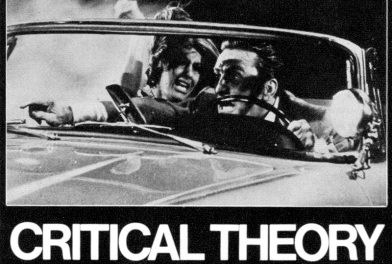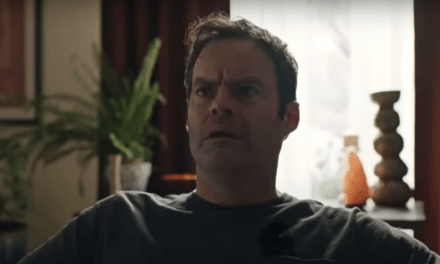The theory/practice ‘divide’ has long bedeviled media studies. But this divide cannot be sustained in the face of new concerns in the field. Studies of gaming and computing emphasize issues that studies of audiovisual media have been able to suppress: questions of the body, of the haptic, of physical engagement, of technologies and their complicated relationship with the humans who use them… or are used by them. The subaltern senses of touch and sound can no longer be neglected in the digital age as they tended to be in more visually-centred times. After all, the very term ‘digital’ refers us to our hands…
My ADAPT research project, charting the typical means of production that lie behind thousands of hours of archival TV, is based on the proposition that historical media objects cannot be understood without a knowledge of the circumstances of their production, including (crucially) the technological arrays which brought them into being. By reuniting those technologies with their skilled users, we are participating in a growing movement of researchers and teachers engaged in ‘hands on history’. They are concerned not so much with how things work, but how we work together with things. This has profound implications for the practice of theory as well as the theory of practice.
The ADAPT team have just organized a three day symposium on the theme of hands on history, with around 60 participants. We had a timely reminder, that ‘hands on’ as a term involves a bias that excludes other kinds of users. In one of the many demonstrations during the event, Patrick LeMieux showed a game controller for quadraplegics using a sip and puff device.

Keynote speakers emphasized the importance of hands on approaches. Annie van den Oever argued that the audiovisual media become naturalized and transparent precisely to the extent that they suppress the signs of their production. Susan Douglas, one of the doyens of SHOT (the Society for the History of Technology) focused our attention on the way that the technologies of distance, like radio and the audiovisual media, can be either telescopes or microscopes, directing attention to the world outside or to the inner world, promoting engagement and empathy or self-absorption. For both, attention to the means of production and their deployment within structures of power are crucial to revealing the devices that underpin the mediated world that we inhabit.
In that sentence, I could have used the word ‘dispositive’ instead of ‘device’. This term, which has become commonplace in film studies, is a transposition (rather than translation) of the French word ‘dispositif’. The word is in routine use in French to mean an apparatus, device or appliance. You can get all kinds of dispositifs at your local DIY store. But the tendency towards abstraction and exoticism in media theory unhelpfully declared it to be a Term or Concept. It comes with the extra problem that it sounds a bit like a term for a photographic negative (for those who can remember what that was). Such theoretical stumblings in media studies lead us to forget that media are unremittingly concrete… despite the fact that we are constantly reminded of this when our classroom internet, computing and projection equipment fail to work.
So we need hands on approaches, which take many forms and were here sharing ideas possibly for the first time in the UK. The approach taken by ADAPT tries to record and document the skilled userswithin defining structures of broadcast production that have already disappeared. Equally, there are teachers who give their students access to machines to explore how they felt like and how they worked. They and others are encouraging an approach defined by Huhtamo as ‘thinkering’. Some use their encounters with machines to create a dialogue with those now mute pieces of equipment to discover not what they used to do, but what they might be capable of in different hands, hands which have been given different affordances by the contemporary arrays of mouse and keyboard, swipe and proximity.
All of these approaches are ‘hands on’, following theorists like Latour (the hybrid of human and machine as a new kind of actor in the world), Steigler (the prosthetic human), Kittler and Ernst (the archaeology of media) and Zielinski (variantology). Andreas Fickers, one of the pioneers of hands on history, provided a lucid overview of these perhaps unfamiliar theorists.
Every hands on approach need the physical objects if they are to work. Car boot sales and junk shops can yield some of them. ADAPT depends on private collectors who loving restore and maintain the complex technologies that produced analogue television. Theorists like Kittler and Ernst accumulated their own collections. You (or your students) can set about building your own bricolage versions of machines using stuff you may have at hand. You can resurrect lost practices, perhaps making anthrotype photos using red cabbages or other organic materials as Kristof Vranken demonstrated. Several participants like Lori Emerson, Stephanie Boluk and Patrick Lemieux are creating their own collections of original machines in the new wave of ‘humanities labs’. (They had a simple tip, by the way: if you want funding nowadays, use the word ‘lab’… and if you want some theory to put behind this, wait for Emerson’s book co-authored with Jussi Parikka).
But by far the largest assemblages of potential objects are held in museum collections. Hands on approaches have been pioneered by our own Science Museum, whose research director Tim Boon presented a live video essay. Christian Hviid Mortensen from the Media Museum in Odense, Denmark explained how their vast collection of video games is exhibited in a hybrid space that allows visitors to use the machines, and in doing so the museum documents what they do and how they behave. Citing Ernst’s insight that a media machine that is not performing is simply a piece of furniture, he explained this new practice which seems, from the evidence of this conference, to be springing up in many different media museum contexts.
Participants were able to debate the issues surrounding this practice. Using machines is not without its problems. Things decay, and in particular wiring decays. Crucial components like VHS heads are no longer made, and they decay. Famously, there are now not enough heads left in the world to play all the VHS tapes left in the world. Things break and cannot be replaced, like cathode ray tubes. Software also decays. But sometimes the details inscribed into those decayed objects is of crucial research importance. Skills decay, though many remarked on the delight of skilled practitioners who rediscover old interfaces. Even the recent past is out of reach of recreation. So a sustained approach to hands on history needs a series of approaches.
The most pragmatic practitioners of the approach adopt the ‘use it and lose it… but document it’ approach. They accept that the machinery they have has a limited lifespan, and that their priority is not to preserve objects in glass cases, but to use them and record how they were used. A lot of the evidence generated will be, like ADAPT’s simulations, of a non-interview nature. It shows how bodies moulded themselves to machines, that gestures became habits, the routines that developed… and that pleasure and joy found expression in all kinds of physical ways.
Others are interested in emulation. Fabian Offert proposed a method of emulation of dying hardware though the use of programmable logic devices, devices which can be programmed to behave like that hardware. That reproduces electronic behavior, but not the old machine. It looks utterly different. Alex Casper Cline explained how the attempts to reproduce the famous Sinclair ZX Spectrum had no appeal for its former users until an exact physical replica of the keyboard was produced, enabling users to behave with the hardware as they used to do. Then the games “made sense again”. It depends, as many speakers emphasized, on what you think is important. Koen Vermeir offered a rigorous thought experiment which concentrated minds on this issue: how is it possible to practice a hands on experiment with technology whose underlying belief system you do not share. His example was the technology and techniques of water divining.
The hands on approach offers a new way of approaching media. It provides invaluable and energizing teaching experiences for students. It generates fresh research perspectives. It validates experience and practice as a means of producing grounded theorization. Above all, it can enable us to avoid the subject/object divide which bedevils much of western philosophy, and lies behind the irritating theory/practice divide that is ingrained in our institutional approaches to media studies.
JOHN ELLIS is Professor of Media Arts at Royal Holloway University of London. He leads the ADAPT project on the history of technologies in TV, funded by a €1.6 million grant from the European Research Council. He is the author of Documentary: Witness and Self-revelation (Routledge 2011), TV FAQ (IB Tauris 2007), Seeing Things (IB Tauris 2000) and Visible Fictions (1984). Between 1982 and 1999 he was an independent producer of TV documentaries through Large Door Productions, working for Channel 4 and BBC. He is chair of the British Universities Film & Video Council and also oversees the Royal Holloway team working on EUscreen. His publications can be found HERE.





